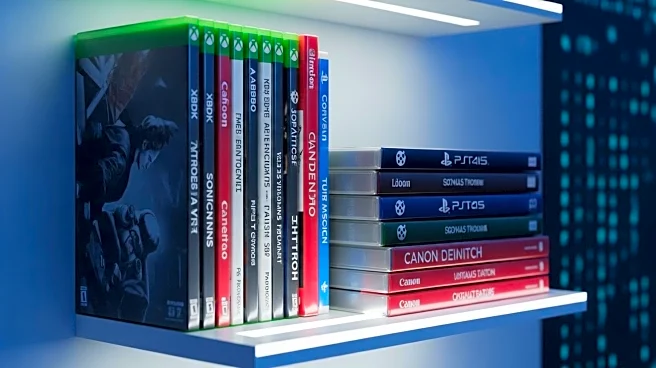What's Happening?
A recent report by analyst firm Circana reveals that a significant portion of U.S. video game players purchase two or fewer new games each year. The study, part of Circana's Q3 2025 Future of Games survey, indicates that around a third of players buy a new game less than once a year, with 12% purchasing once a year and 18% purchasing once every six months. This data suggests that only 4% of U.S. gamers buy a new game more often than once per month. The report highlights the role of 'hyper enthusiast, price-insensitive players' in sustaining the industry, particularly in the non-free-to-play gaming space.
Why It's Important?
The findings underscore challenges for the gaming industry, particularly for smaller studios that rely on game sales for revenue. With a majority of players buying fewer games, the industry faces stagnation, necessitating strategies to engage average consumers. Subscription services like Xbox Game Pass offer value to 'hyper enthusiast' players, but the industry must find ways to appeal to the broader market. The report also raises questions about the sustainability of current pricing models and the impact on game development and innovation.
What's Next?
The gaming industry may need to explore new business models and marketing strategies to attract average consumers. Companies might focus on enhancing subscription services or developing more engaging free-to-play games to capture a larger audience. Additionally, the industry could see increased investment in cloud gaming services, as evidenced by Amazon's efforts to boost its Luna service.
Beyond the Headlines
The report highlights a potential shift in consumer behavior, with implications for digital distribution and game ownership. As subscription models gain popularity, the concept of owning games may evolve, affecting how players interact with and value their gaming experiences.










